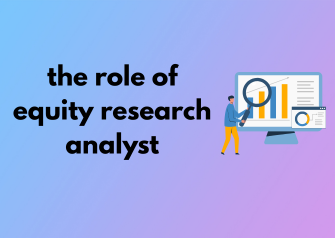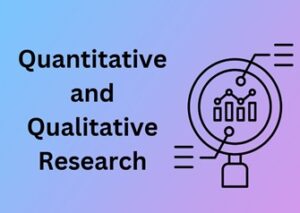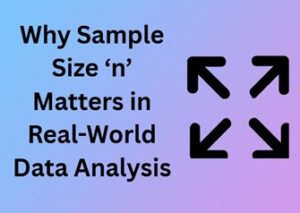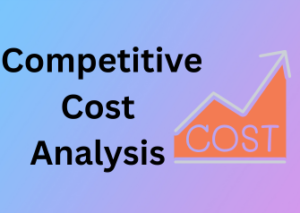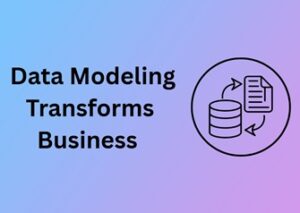The Fundamentals: Who is an Equity Research Analyst?
Let’s unravel a profession that often intrigues but doesn’t get its fair share of the spotlight. An Equity Research Analyst—does this title sound imposing? Sure, but peel back the layers, and you’ll find it’s not as intimidating as it seems! Think of an equity research analyst as a glue that connects financial data to investment decisions. It’s a role that blends curiosity, financial acumen, and an appetite for digging deeper.
So, who exactly is this person behind the spreadsheets and stock predictions? In a nutshell, an equity research analyst is someone who evaluates companies, typically listed on stock exchanges, to determine their investment potential. But what does this really mean in plain terms? Imagine you’re a treasure hunter—your job is to seek out the value hidden within companies by studying their financial performance, market position, and future growth prospects. Exciting, right?
Breaking It Down: What They Do
Equity research analysts are generally divided into two categories: sell-side analysts and buy-side analysts. Here’s a bite-sized look:
- **Sell-side analysts**: These professionals typically work for brokerage or investment banks. Their job is to conduct detailed research and come up with reports, including recommendations like “buy,” “hold,” or “sell,” for specific stocks. Why? To guide traders, portfolio managers, and even retail investors.
- **Buy-side analysts**: These individuals are focused on asset management companies, mutual funds, or hedge funds. Their primary objective? To help portfolio managers make informed investment decisions on behalf of clients or the fund itself.
The distinction is crucial, but the foundational role remains the same: assessing the numbers and trends behind a company and, ultimately, helping someone decide if an investment is worth their time—and money.
Numbers Meet Stories
Unlike professions where you’re confined to a repetitive routine, equity research brings together numbers, narratives, and strategy in a rare and fascinating blend. It’s not simply a numbers game where analysts scroll through Excel sheets all day (though, yes, there’s plenty of data-crunching!). The role requires asking the right questions:
- What makes this company tick?
- Where is it headed in the next five or ten years?
- What external factors—political, economic, technological—could affect its trajectory?
Answering these questions demands more than just technical skills; it’s about constant learning. To use a metaphor, the equity research analyst is part detective and part storyteller. They gather clues (financial data, market reports, and trends) and spin them into a coherent, compelling narrative about a company’s future prospects. It’s investigative journalism, but for finance.
Skillset Breakdown: The Core Tools of the Trade
Being an equity research analyst is so much more than assessing spreadsheets and crunching numbers. It’s a highly dynamic role that calls for a well-rounded blend of hard skills and soft skills. Let’s break down the essential tools of the trade that set top analysts apart.
1. Analytical Thinking and Financial Acumen
At the heart of equity research lies the ability to interpret data accurately and identify patterns that others might miss. Whether it’s diving into financial statements or tracking macroeconomic trends, equity research analysts must sift through vast amounts of information and synthesize it into meaningful insights. A strong grasp of accounting principles, valuation methods, and investment analysis is non-negotiable here.
Pro Tip: If you’re looking to hone these abilities, mastering tools like Excel modeling, and platforms such as Bloomberg or FactSet, can be a game-changer. Learning to quickly interpret balance sheets, profit statements, and cash flow, while tying those to company valuation, is a skill worth its weight in gold.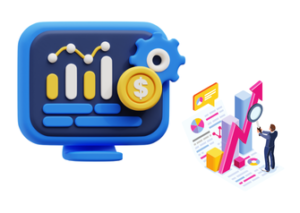
2. Communication Skills: The Art of Storytelling
Your numbers and charts mean little unless you can tell a compelling story around them. Equity research analysts are not just data crunchers—they are narrators of investment theses. They need to explain their findings clearly in research reports or pitch persuasive ideas to portfolio managers.
Analysts must strike a balance between technical jargon and everyday language. Why? Because not every stakeholder who reads your report has a PhD in finance. The ability to tailor your communication style for different audiences is often the difference-maker.
3. Time Management and Multitasking
Let’s face it: this is a fast-paced industry. Juggling multiple tasks—from tracking quarterly earnings to preparing for client meetings—demands exceptional organizational skills. Deadlines wait for no one, particularly when earnings season comes around. Those who can prioritize effectively and handle high-pressure situations thrive in this environment!
Building workflows with tools like Trello or specialized financial software can help stay on top of projects—and your sanity.
4. Curiosity and Market Awareness
The stock market never sleeps, and as an analyst, you can’t afford to fall behind. Equity research requires insatiable curiosity to stay updated on industry changes, geopolitical factors, or technological advancements that influence company performance.
Keep an eye on market news, industry journals, and competitor movements. Keeping yourself informed is half the battle won.
5. Research and Data Interpretation
An equity research analyst lives in the world of data. Whether combing through industry reports, analyzing company financials, or studying broader market trends, research is your bread and butter. But it’s not just about gathering information—it’s about asking the right questions, cross-verifying data, and drawing actionable insights from the clutter.
6. Soft Skills Matter Too!
Don’t underestimate the value of emotional intelligence and collaboration. Equity research often involves dealing with diverse teams and multiple stakeholders. From maintaining good relationships with company executives to working alongside sales teams, adaptability and people skills are key. Plus, it helps if you can stay calm when market volatility sends others into a frenzy!
The Daily Workflow: Behind-the-Scenes of Research
Ever wondered what an equity research analyst does all day? It’s not just poring over spreadsheets or staring at stock tickers. It’s a fast-paced profession that blends detective-like curiosity, intellectual rigor, and meticulous organization. Let’s peel back the curtain and walk through the daily workflow of these financial strategists.
A Day in the Life: The Morning Hustle
The day often starts early for equity research analysts—it has to, given the worldwide nature of financial markets. By the time most people are brewing their morning coffee, analysts are already digesting market updates. Overnight earnings reports, geopolitical events, and market-moving news are the first items on the agenda.
Monitoring news feeds from reputable outlets, tracking industry developments, and analyzing pre-market activity are top priorities. The goal? To stay one step ahead of the curve and assess how current events could influence stock prices or shift industry dynamics.
Breaking Down the Numbers
As the dust settles on the morning news rush, the real analytical work begins. This involves diving into company-specific data like quarterly earnings reports, balance sheets, and income statements. Equity research analysts scrutinize financial statements to identify trends, measure profitability, and assess risk factors. This is where the magic of number-crunching meets strategic thinking.
Using spreadsheets and financial modeling tools, they forecast metrics like revenue growth, earnings per share, and free cash flow. This analysis serves as the backbone of any research note or report they’ll produce later in the day. Attention to detail is king here—missed decimal points or incorrect assumptions can lead to flawed conclusions and potentially costly miscalculations for their clients.
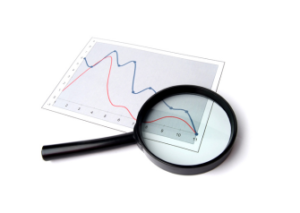
Collaborating with the Team
This is not a solo job! While equity research requires a certain level of individual focus, collaboration plays an equally essential role. Analysts often discuss findings with their teams, including research associates, senior analysts, or even investment managers. Comparing notes on macroeconomic factors or double-checking assumptions ensures a report’s strength and accuracy.
Additionally, communication with internal departments—like sales or trading teams—can give analysts deeper insights into market sentiment. Teams often strategize how to position their insights in a way that adds real value to clients, showcasing expertise in sectors like healthcare, tech, or energy.
Writing Research Reports
The ability to blend storytelling with hard data is a skill every equity research analyst sharpens daily. Writing detailed reports is a critical part of the job and requires translating complex financial information into actionable insights for institutional clients.
Whether it’s issuing a ‘Buy’, ‘Sell’, or ‘Hold’ recommendation, clarity matters. Reports need to be concise, persuasive, and data-driven while maintaining enough nuance to account for uncertainties in the market. These documents often serve as the foundation for investment strategies, making this phase of the day particularly high-stakes.
Client Interaction and Market Close
The day isn’t over once the reports are written. Equity research analysts often spend part of their afternoon fielding questions from clients, either via calls, emails, or even video conferences. Answering client queries on stock recommendations or delivering personalized insights helps analysts build trust and credibility.
Finally, as the markets close, it’s time to reflect on the day’s performance. Analysts review the company or sector movements they monitored earlier, take notes for the next day, and prepare strategies for upcoming calls or meetings. It’s a continuous loop of learning, refining, and adjusting.
Equity Analysis Models: Decoding the Numbers
Let’s face it: numbers can sometimes feel intimidating. But for an Equity Research Analyst, they represent the heart and soul of decision-making. Equity analysis models are powerful tools used to evaluate companies, project their future performance, and assess how attractive an investment opportunity might be. In this section, we’re going to crack open these models and strip away the mystery, showcasing how they help analysts make sense of the financial puzzle. Ready? Let’s dive in!
Why Models Matter: The Blueprint of Analysis
Imagine trying to build a house without a blueprint. Scary, right? That’s why financial models exist—they act as the blueprint for making sound investment calls. These models allow analysts to simulate various financial scenarios, test assumptions, and forecast key metrics like revenue, profit margins, and stock prices. Essentially, they’re the crystal balls of the financial world (only backed by math, not magic).
The Core Models in an Analyst’s Toolkit
Analysts don’t use a one-size-fits-all approach. Depending on the company, industry, or level of detail needed, the type of model used will vary. Here are some of the most commonly used equity analysis models and how they work:
- Discounted Cash Flow (DCF) Model: Often considered the gold standard, the DCF model estimates a company’s value by forecasting future cash flows and discounting them back to their present value. It’s a little like peeling back the layers of a financial onion to determine its true worth today. This model is all about the long-term view.
- Comparable Company Analysis (CCA): Also known as the “comps” model, this one compares a target company’s valuation metrics with those of similar companies in the same industry. Essentially, it’s the financial equivalent of comparing apples to apples. Simple, yet powerful.
- Precedent Transactions Analysis: When looking at mergers or acquisitions, this model compares a company’s metrics to those of similar deals that have occurred in the past. It’s like learning from history to estimate the future.
- Financial Ratio Models: These are quicker, more straightforward models that analyze key ratios like price-to-earnings (P/E), return on equity (ROE), or debt-to-equity (D/E). They’re often paired with other models to paint a more comprehensive picture.
The Art of Making Assumptions
Now, here’s a little secret: even the best models rely on assumptions, and those assumptions are only as good as the data and reasoning behind them. For instance, how much revenue do you think a tech company will grow over the next five years? What kind of inflation rates or interest rate changes might impact its earnings? Analysts must think critically, ground their assumptions in solid research, and remain wary of personal biases.
A word of advice for anyone looking to dive into financial modeling: don’t just copy and paste numbers blindly. Learn what those numbers represent and understand the story they’re telling about the company.
Models Are Only Part of the Puzzle
Here’s the kicker: even the most complex equity analysis model isn’t the final word. Models are tools, not answers. They must be combined with qualitative insights, like an assessment of management quality or competitive positioning. Remember, numbers only tell part of the story—analysts bring that story to life.
Industry Insights: Sector Specialization and Its Impact
Ever wondered why some equity research analysts focus specifically on sectors like healthcare, technology, or energy? Let’s dive into the often-overlooked, yet fascinating, aspect of sector specialization and how it shapes the work of an equity research analyst.
Why Sector Specialization Matters
Think of the job of an equity research analyst like solving intricate puzzles. Each sector – whether it’s finance, energy, healthcare, or technology – is its own world with unique trends, regulations, and challenges. By narrowing their expertise to a specific sector, analysts gain a deep understanding of its intricacies. This depth of knowledge allows them to make more precise forecasts, identify opportunities others might miss, and provide actionable insights to investors.
Without sector specialization, an analyst could end up providing surface-level advice. Let’s face it: offering credible recommendations when you’re bouncing between industries like semiconductors one day and pharmaceuticals the next is next to impossible. Specialization ensures that analysts stay sharp and relevant in one domain. This, in turn, gives their clients the edge they need in a highly competitive market.
Building Credibility in a Sector
Just like a doctor becomes an expert through years of specialization, equity research analysts build credibility by immersing themselves in a specific industry. This process includes:
- Understanding Industry Jargon: Each sector comes with its own language. For instance, in the automotive world, terms like “EVs” (electric vehicles) or “OEMs” (original equipment manufacturers) are everyday vocabulary for analysts.
- Monitoring Macro and Micro Trends: Are electric vehicle sales booming worldwide? Is there a new regulation in energy that could disrupt established players? Analysts track these shifts continuously.
- Focusing on Key Players: Analyzing the performance of companies dominating the space. For example, a tech analyst might scrutinize giants like Apple, Google, or Microsoft, while a healthcare analyst might become fluent in developments from Pfizer or Moderna.
Building expertise also means attending industry events, understanding governmental policies that shape the sector, and staying updated on competitive dynamics. Basically, an effective equity research analyst becomes a walking encyclopedia of their chosen industry.
Sector Influence on Investment Outcomes
Now, why does all this matter for clients such as institutional investors or retail traders? Because sector knowledge isn’t just about presenting facts – it directly impacts investment decisions. For instance:
- Identifying Market Leaders: Analysts who specialize can spot hidden gems or emerging leaders in a sector before they become household names. Think about being able to recommend Amazon or Tesla back when they were underestimated newcomers.
- Managing Risk: Specific industries carry unique risks. Take oil and gas: A sudden spike in crude oil prices or a new environmental regulation could shake the industry. Sector-savvy analysts predict and navigate these risks effectively.
- Timing Investments: Each sector experiences growth cycles. For example, technology often operates on rapid innovation cycles, whereas utilities tend to deliver steadier, slower returns. Strategic timing can make or break an investor’s portfolio.
Corporate Meetings: The Analyst and Company Executives
Ever wondered how some of the sharpest minds in finance gather information straight from the source? That’s where corporate meetings come in—the cornerstone of every equity research analyst’s toolkit. Whether it’s sitting down with a company CEO, CFO, or even a hands-on operational manager, these interactions are all about peeling back the layers to truly understand a business. Let’s dive into why these meetings matter so much and how they shape an analyst’s insight.
Why Corporate Meetings Are Crucial
At their core, corporate meetings offer a rare and valuable window into the organization being analyzed. Sure, annual reports, earnings calls, and market data are full of useful information. But there’s only so much a balance sheet or press release can say. When an analyst meets face-to-face with decision-makers, there’s an opportunity to go deeper, clarifying the company’s strategies, competitive advantages, and even challenges it may not openly broadcast. It’s where bets about the future direction of the company get a little sharper.
Types of Corporate Meetings
An equity research analyst doesn’t just stumble into a boardroom at random. These meetings take various forms, and each serves a specific purpose. Here’s a quick rundown:
- One-on-One Meetings: The gold standard! These intimate sessions with executives offer analysts the most personalized insights.
- Group Presentations: Larger forums where companies might present new product launches, strategic updates, or earnings results to multiple analysts at once.
- Conference Calls: An effective way to clarify post-earnings results or address investor queries without all the in-person logistics.
- Site Visits: Sometimes, seeing is believing. Touring a factory, R&D lab, or retail store adds tangible depth to theoretical knowledge.
The Art of Asking the Right Questions
So, how does an analyst make the most of these meetings? It all comes down to preparation. Walking into a room, an analyst has already combed through financial statements, set expectations based on historical data, and crafted a list of precise, thoughtful questions. The goal isn’t just to hear the same old key metrics that the market already knows—it’s to uncover actionable, forward-looking details. Think questions like:
- “How does the company plan to navigate specific challenges, such as rising operational costs or competition?”
- “What are the main growth drivers for the next fiscal year, and how will they affect margins?”
- “Can we expect any key innovations or leadership changes on the horizon?”
The Insider’s Edge
The critical takeaway from these meetings is insight that others might not have. And no, it’s not about spilling secrets. Analysts are bound by strict compliance guidelines that forbid “material, non-public” information from being shared. Instead, it’s about reading between the lines—an executive’s tone, confidence level, or hesitation on certain topics can hint at future success (or struggles).
Impact on Investment Decisions: Connecting Numbers to Real-world Outcomes
Have you ever wondered how the financial world transforms raw data and numbers into actionable investment decisions? This is where the role of an equity research analyst becomes strikingly apparent. Let’s dive into how these masterminds connect their research findings to shape impactful investment strategies, translating spreadsheets into real-life financial stories.
Understanding the Bridge Between Research and Action
The work of an equity research analyst doesn’t end when the calculations are done, or when the valuation models are polished. In fact, producing reports is only the beginning of their contribution to the investment ecosystem. Their ultimate purpose is to help investors make informed decisions, whether that’s buying, holding, or selling securities. These decisions ripple across portfolios, industries, and the broader economy.
So, how does it all come together? Equity research connects the dots between company performance, industry shifts, macroeconomic factors, and investor goals. By piecing together these complex puzzles, analysts provide a comprehensive outlook that guides investment decisions.
Providing Clarity to Complex Information
Let’s face it—financial details can be overwhelming for the average investor. The equity research analyst acts as a translator, decoding jargon and technicalities into practical insights. Imagine reading a hundred-page annual report filled with statistics, legal language, and market forecasts. Now imagine having someone who simplifies that document down to a digestible, insightful one-pager. That’s the power of expert analysis.
The precision and clarity provided by analysts allow portfolio managers, institutional investors, and even individual traders to act confidently. Whether the recommendation is a “strong buy” or a cautious “hold,” the clean presentation of data ensures decisions are both strategic and supported by evidence.
Real-world Impact: More Than Just Numbers
Not everything in equity analysis revolves around calculations and balance sheets. Analysts bring a human perspective to financial evaluation. For example, they consider market sentiment, unseen industry disruptors, or even geopolitical events that might affect a company’s prospects. This adds depth to the raw numbers, ensuring recommendations factor in unforeseen risks or opportunities.
Think of an analyst covering a renewable energy company. Beyond crunching financial ratios, they’ll analyze how shifts in green policies or advancements in solar technology impact the company’s future growth. This blend of numerical and narrative-driven insight ensures their recommendations are actionable in reality—not just on paper.
The Ethical Responsibility
A key part of the job, and what makes it so impactful, is ethics. Inaccurate or biased recommendations could lead to millions in losses or erode trust in financial systems. Good analysts understand that their findings inform some of the most significant decisions in business and finance. Transparency and objectivity are non-negotiable when shaping investment verdicts.
Ultimately, investors rely on the credibility of the analyst’s work. Whether they’re large institutional investors managing billion-dollar funds or smaller players building retirement plans, the trust placed in this profession is immense. Equity research analysts recognize this responsibility, striving to ensure every report stands up to scrutiny.

